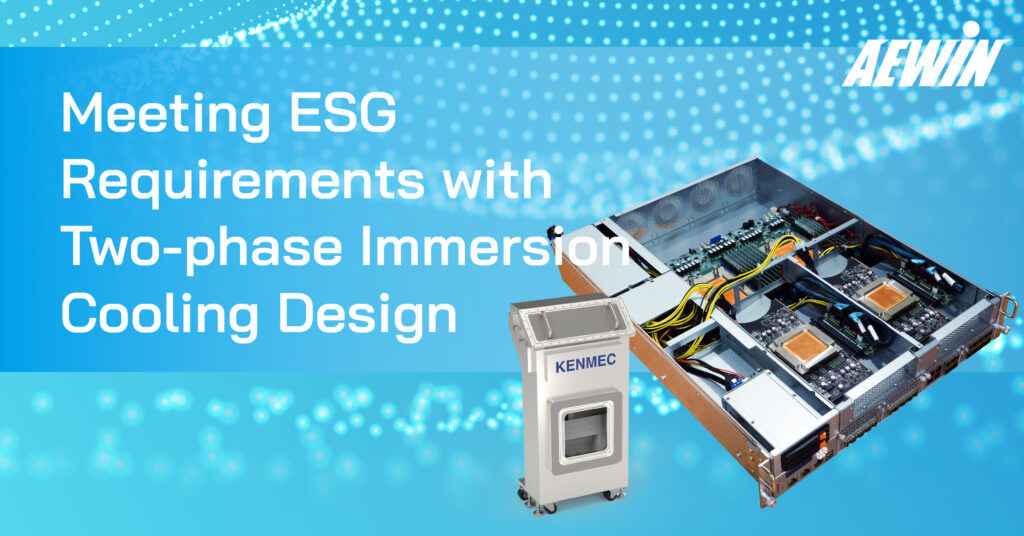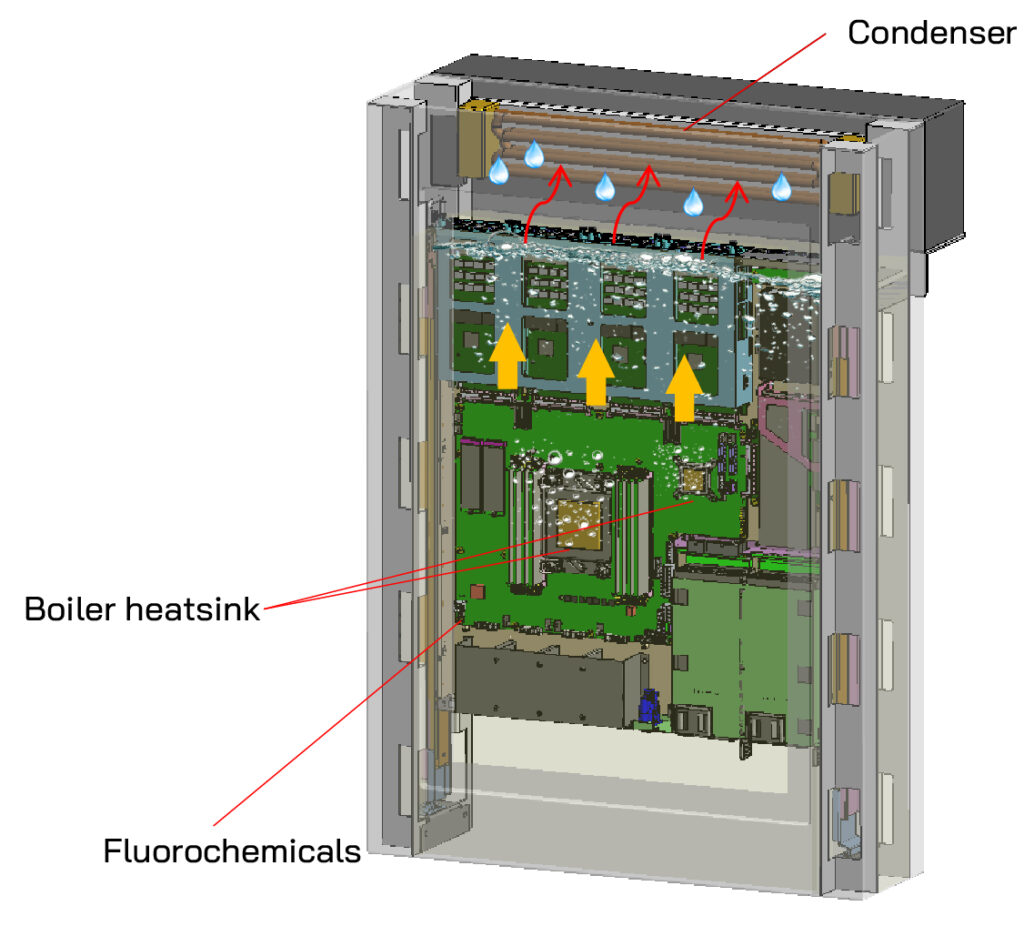
Introduction
Sustainability and ESG (Environmental, Social, Government) have become critical missions that everyone has to carry out. The growing awareness and the government strategy of Net zero and carbon taxes make companies come up with solutions to meet up the goal. As for hardware device wise, to reach lower PUE (Power Usage Effectiveness) is one of the approaches. With two-phase immersion cooling design on AEWIN high performance network appliance, PUE can be lower. In this Tech Blog, we will be introducing the design and its benefits for improving the sustainability with two-phase immersion cooling design.
Improved PUE with Two-phase Immersion Cooling Design
What is Two-phase Immersion Cooling
Two-phase immersion cooling is a data center cooling technology. In the two-phase immersion cooling computing system, the electronic parts are immersed in the non-conductive cooling liquid, which boils at a low temperature and efficiently removes heat from the components. The immersion liquid is typically a specially formulated fluid. When the electronic components are immersed in the liquid, the heat generated by the components causes the liquid to boil and turn into a vapor. The vapor then rises to the condenser, where it is cooled and condenses back into a liquid. The condensed liquid then flows back down into the container and is once again in contact with the electronic components, providing continuous cooling.

The Benefits of Two-phase Immersion Cooling
The main advantage of two-phase immersion cooling over traditional air-cooling is its efficiency of cooling as the dielectric liquid has a much higher heat capacity than air. It can effectively help to lower the power consumption of the total system as no other devices are required for the cooling. Fans for air-cooling would no longer be needed in two-phase immersion cooling which makes the whole system relatively quiet that may be beneficial to certain applications. As fan is with high failure rate and it would not be used in the two-phase immersion cooling design, the reliability of the whole system can also be improved. Furthermore, the density of power and computing can be increased as there is no need to consider the height of the heat dissipation interface and components that would affect the air flow.
AEWIN Cooperates with KENMEC to Provide Low PUE Solution
As two-phase immersion cooling is one of the efficient liquid cooling technologies, AEWIN cooperates with KENMEC and ITRI to enable a two-phase immersion cooling design on AEWIN’s latest Network Appliance, SCB-1946 series, for better thermal management and enhanced energy efficiency. AEWIN SCB-1946 powered by 2x 400W AMD EPYC 9004 (Genoa) CPUs with KENMEC two-phase immersion cooling design achieves a heat dissipation capacity of over 2000W (with 2x NVIDIA data center GPUs and four NIC cards installed) for the immersion system and the PUE approaches 1.0, meeting the low-carbon energy-saving goals and ESG (environmental, social, and governance) requirements, while also reducing operational costs from an economic perspective.
Summary
Applying two-phase immersion cooling design on high performance network appliance has advantages of efficiency, reliability, and higher computing density. AEWIN SCB-1946 with KENMEC two-phase immersion cooling design achieves lower PUE, reduced OPEX, and meet ESG requirements all at the same time.